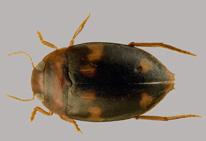Abstract
The rosette architecture of some bromeliad species traps water and organic matter from the canopy in leaf axils (forming phytotelmata) and harbors many species of invertebrate animals (Frank & Lounibos 2009). Some water mites are adapted to live in phytotelmata; typically recorded from water-filled tree holes, bromeliad tanks, and a range of plant axils. Karl Viets (1939) was the first acarologist who discovered Micruracaropsis phytotelmaticola (Viets, 1939) in the water contained in the leaf bases of epiphytic Bromeliaceae in Surinam. Later on, Orghidan et al. (1977) described Arrenurus bromeliacearum Orghidan, Gruia & Viña Bayés, 1977 from phytotelmata in Cuba. Orghidan & Gruia (1987) reported Arrenurus andrewfieldi Orghidan & Gruia, 1983 from phytotelmata of epiphytic bromeliad Vriesea platynema in Venezuela. Smith & Harvey (1989) described Arrenurus kitchingi Smith & Harvey, 1989 from water-filled tree holes in Queensland, Australia. The same authors (Smith & Harvey 1989) also reported that members of genus Thyopsis occur in water-filled tree holes in Ohio, USA. Rosso de Ferradás & Fernández (2001) reported two Arrenurus species from water accumulated in Guzmania mucronata (Bromeliaceae) in Venezuela, A. andrewfieldi Orghidan & Gruia, 1983 and A. caquetiorum Rosso de Ferradás & Fernández, 2001.

